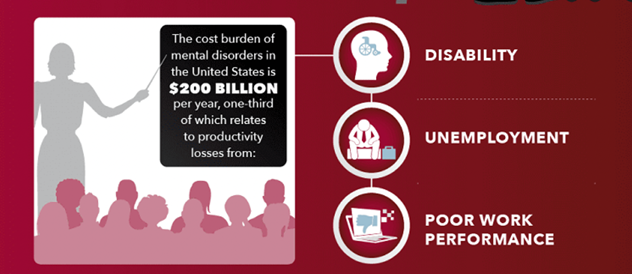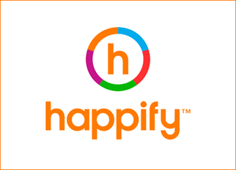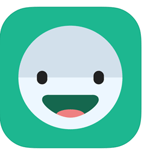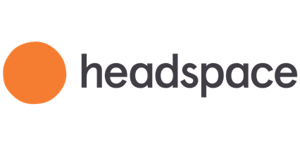How to support your employees’ mental health with mobile apps
Employee stress seems to be an ever-present topic these days. We all know, and studies have confirmed, that occupational pressures are the leading source of stress for American workers, especially over the last few decades. But now, COVID-19 has only escalated this situation.
Workplace apps are now a staple for many businesses—whether used for collaboration, communication or project management. Given their increasing popularity and ubiquity, integrating mobile apps into a stress management program might be one of the cheapest, easiest, and most effective methods to improve the emotional wellbeing of your employees.
Millions of employees are working from home, some isolated, others overwhelmed by family and home-schooling responsibilities, almost all anxious about when this time of uncertainty, unpredictability and instability will end. Others are on the front lines, or working with the public, at risk with every new encounter. On top of that, fears of job loss, financial worries and reduction of support services are troubling for even the highest-performing workers.
Of course, stress is always part of any job, either at home or in the office, and there's no way to prevent it completely. But together employers and employees can work to help manage work-related stress. While many effective mental wellness programs are available, it’s a good idea to consider some cost-efficient solutions at the online app store.
COVID-19 and work stress
With the world's highest number of COVID-19 diagnoses, a health care system under pressure, and record unemployment, the U.S. business community continues to struggle due to the pandemic. So it’s no surprise that a mental health crisis has escalated, too.
Just how significant has COVID-19 been in increasing employee stress? According to Marketwatch survey, 7 of 10 U.S. workers are stressed “to the max.” They reported that our current crisis is the most stressful time of their entire professional careers—even when compared to the terror attacks on September 11, 2001 or the 2008 Great Recession.
The link between remote work and employee stress is also well documented. In an October 2019 article, the World Economic Forum cited a United Nations report that found 41% of remote workers experiencing high stress levels compared to just 25% of office workers. Buffer’s 2020 State of Remote Work survey of 3,500 remote employees also shows similar findings – 20% report feeling lonely while 18% are unable to unplug after work.
According to CDC, employees who may respond more strongly to the stress of the COVID crisis include those:
- Dealing with medical conditions and mental health issues
- Caring for family members or loved ones
- Working in health care, the food industry or retail establishments
- Suffering from a substance use disorder
- Living alone

SOURCE: http://www.stress.org/workplace-stress/
A majority of U.S. employers expect to extend their remote work policies after the COVID-19 pandemic ends, according to a 2020 survey by Willis Towers Watson. Many employers anticipate the longer-term consequences of the pandemic will have a lingering negative impact on their work cultures.
The importance of managing stress during a pandemic
The same survey found that, while employers have boosted their employee communication in response to the pandemic, they’ll need to do more to help workers cope in the months ahead, as the country faces prospects of a second wave and here in Massachusetts, the coming darker, colder winter months. In fact, 63% of workers say their company isn’t doing enough to support their emotional wellbeing during the COVID-19 pandemic. And 93% believe the companies that will best survive the pandemic will be those that support employee mental health. Given these statistics, business planning that makes employee wellness a top priority has never been more critical.
As the COVID-19 pandemic creates new challenges for employees, many will need to find new ways to manage stress. One of the biggest challenges as a result of forced isolation is limited access to mental health care. As more employees deal with anxiety and depression, the demand for therapists is expected to spike.
Yet many employees can’t keep their regular appointments because of mandatory quarantines, lack of time, or resistance to teletherapy. Moreover, traditional events that helped manage stress in the past – such as company retreats, office parties, watercooler gossip -- are no longer possible for the foreseeable future.

SOURCE: http://www.stress.org/workplace-stress/
The good news is that tech tools exist for companies to supplement the way they already help employees manage their mental health. Employees can easily turn to these solutions, which require no personal contacts and are digitally accessible from home. Given that a large percentage of employees will be working from home indefinitely, these apps can provide a less formal and more accessible route to mental health resources than traditional face-to-face counseling.
Apps for individual users
Here are five ingenious apps that may make your employees happier and more productive. They are free to use and create an account, but more advanced features may require in-app purchases or a subscription.
Unless noted, AllWays Health Partners has no direct arrangement with the owners of the apps shared below.
Sanvello
Available for: iPhone, iPad, and Android
Sanvello offers support for managing stress, anxiety, and depression, with a focus on helping individuals understand what works for them to feel better. It includes access to a peer support community, coaching, and self-care tools like mood tracking, guided journeys, and progress assessments. These clinically proven techniques have seen results: over 60% of Sanvello members showed a 15% improvement in their stress, anxiety, and depression levels in less than 30 days.
Users in select states, including Massachusetts, can also connect with a licensed clinician through live video sessions. While many health plans, including AllWays Health Partners, offer free subscriptions to the app, users should check to see if Sanvello Therapy is in-network for their plan before scheduling a session.
Focus Watch
Available for: iPhone, iPad, Apple Watch, Mac OS
FocusWatch reminds employees to take breaks, which are proven to help restore mental and emotional resources. Sometimes it simply slips our minds to take a time out. “Just one more email” can turn into hours of exhausting multi-tasking.
Rather than getting caught up in an endless To Do list, employees can track just how long they’ve been plugging away. Then using scheduled alerts, they can decide when and how often to take a moment’s respite, refresh and return to work with greater focus and productivity.
Happify
 Available for: iPhone and Android
Available for: iPhone and Android
Happify teaches employees how to turn negative feelings into positive ones by forming new habits that help relieve anxiety and stress. The app incorporates a series of games and activities based on a framework referred to as STAGE (Savor, Thank, Aspire, Give, Empathize) that helps users understand the source of their negative emotions and overcome them.
These techniques were developed by experts in the fields of positive psychology, mindfulness, and cognitive behavioral therapy. More than 85% of frequent users reported being happier in two months by engaging in just a few activities per week. The app also offers a business solution.
Moodpath
Available for: iPhone and Android
As a personalized “mental health companion,” Moodpath checks on employees three times a day (morning, afternoon, and evening) with questions that "learn" from the users responses. Based on answers to these questions, users receive Mental Health Reports and Statistics that track the employee’s mood over time.
These “snapshots” help employees better understand their unique emotional patterns and triggers. The app also lets users choose from a library of cognitive behavioral therapy exercises to learn new mindful techniques and self-compassion skills.
Daylio
 Available for: iPhone and Android
Available for: iPhone and Android
Daylio is a “micro-diary” that lets employees keep a journal to record their moods, track activities, and create habits for better productivity. Users can also personalize their notes with a database of icons, set journaling reminders, and get monthly statistics to help them to better understand their patterns.
The app backs up and can restore entries on Google Drive, turns on a PIN lock to keep notes private and secure, and exports the journal to a CSV document for Excel so it can be saved to a hard drive and printed.
Apps for businesses
These apps are designed to be part of your workplace wellness program and are built to support businesses and the mental health and wellbeing of their employees.
Evermind
The Evermind app can help employees build resilience and handle stress using engaging, evidence-based exercises. Employees can access guided programs on improving sleep, disconnecting after work hours, challenging negative thought patterns and more.
The app also features a thought record journal, stress score assessments, mindfulness exercises, and more activities and programs curated by a team of mental health professionals.
MoveSpring
MoveSpring is a social fitness tracker that builds a digital community where users can share their workout routines and encourage each other. The app helps create a sense of camaraderie, so employees feel less isolated and, as a result, less stressed when working from home.
The technology builds micro-challenges around everyday exercise. Employees can set shared milestones, where the total steps taken contribute to their overall goal. Users can also upload their own posts, photos and videos.
Headspace
Headspace is one of the most popular meditation apps on the market. Created by a Tibetan monk, it’s built on a combination of ancient theory, modern science, and practicality. Its instructional process is simple, helping employees achieve a calmer state of mind using guided mini-meditations, sleep casts, and inspiring stories.

Headspace currently reaches a million users and has partnerships with prestigious scientific research universities, such as New York University and University of Southern California. Major companies like Adobe, LinkedIn, and Spotify use Headspace to help their employees reduce stress and unlock their business potential.
Simple Habit

Simple Habit also specializes on meditation, but rather than focusing on a single teacher and pathway to mental clarity, the app is built on a collection of mediation habits. Users gain access to fifty free sessions and a library of over 1,000 meditations for a variety of issues, including anxiety and insomnia as well situationally based worries, such as preparing for a big presentation.
The app offers flexible 5-, 10- and 20-minute guided meditations that can fit into any employee’s schedule to help improve resiliency, memory, focus, and information processing.
Calm
Calm also offers guided meditations of varying lengths. But it particularly specializes in helping employees settle down before bed using stretching and breathing exercises, sleep stories, nature sounds, and soothing music tracks.
Users can track their mindfulness progress, learn skills, and develop habits that not only relax body and mind, but also cultivate creativity.
Focus@Will
Focus@Will is an app for employees looking to boost productivity using scientifically optimized and personalized background music to help them reduce distractions, such as busy open offices, kids at home, traffic, and lawncare appliances. The idea is that the audio tracks will blend into the background noise, making both unnoticeable once the employee habituates.
Scientists and audio experts have tested the app’s music and measured its effects on the brain and heart-rate. They found that Focus@Will allows users to achieve “deep” work that delivers a profound sense of accomplishment. You can read their research white paper for more details.
It is important to remember that, while these apps are effective, they are meant to supplement resources such as Employee Assistance Programs (EAPs) and formal counseling programs, not replace them. But used in the right context, tech wellness solutions are accessible, inexpensive tools employees can quickly and easily turn to during troubling times.
